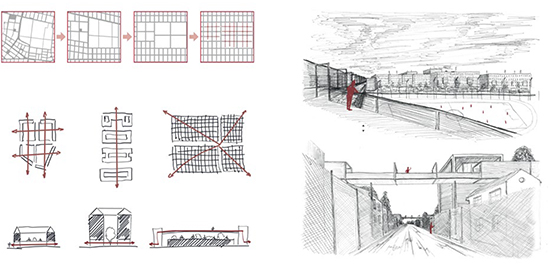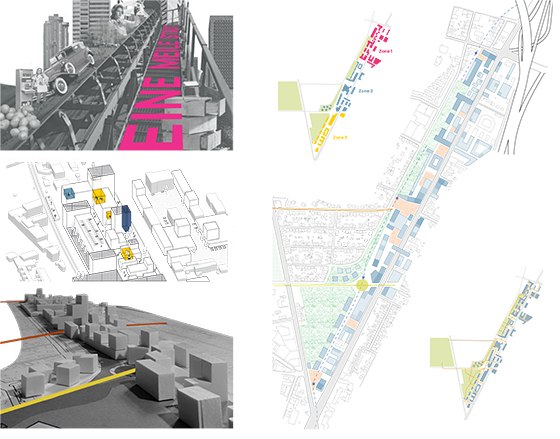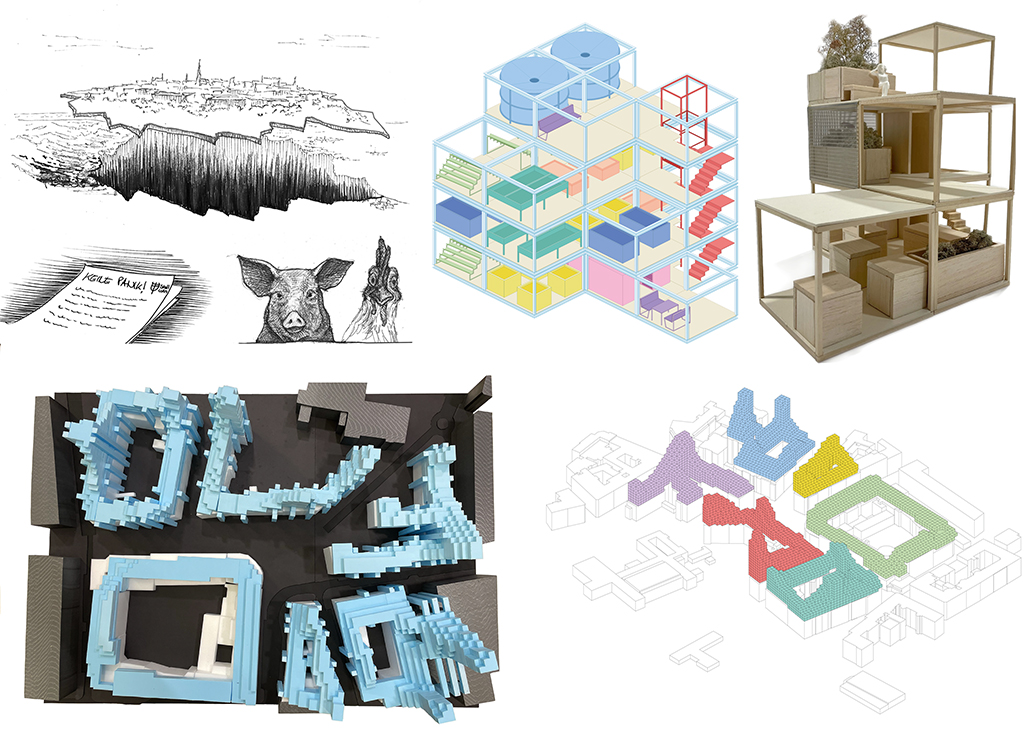Urban Design Studio
teaching / bachelor course
“The Urban Design Studio is a laboratory. It can be dissected, experimented with, injected, reanimated, distilled, dissolved and recreated. And it can also explode sometimes!”
Christoph Luchsinger (1954-2019)
From the description of the course:
“On the basis of a concrete Viennese urban area (1km x 1km), the theoretical knowledge conveyed in the lecture will be applied and the respective morphological development and typological structuring will be analysed. Potentials and shortcomings will be identified as starting points, which will enable students to develop large-scale design concepts. By creating concepts and working in teams, work results are negotiated and specified in different scales (1:10,000 - 1:500). The main topics here are the granularity, development and programming of building structures, the formation of urban space, the relationship between open space and enclosed space, the significance of the ground floor and the qualification of public space.
After successful completion of the course, students are able to analyse the complexity of urban systems and the interplay of political, social, economic, ecological and legal processes and to present them in a result-oriented and precise way. After the positive conclusion of the exercise, they will be able to identify possible fields of action in the urban context and will be able to develop conceptual and methodological urban development projects as part of a team. The appropriate format, medium and scale can be chosen for the presentation of the developed projects, and the achieved goals can be demonstrated argumentatively with the vocabulary acquired in the course.”
supervised together with: Sabine Gstöttner (WS 2018/19), (WS 2020/21, WS2021/22, SS 2022, SS 2023)
where: Institute of Urban Design and Landscape Architecture, Vienna University of Technology, Austria
when: WS 2018/19 ‘Vienna Fragments’, WS 2020/21 ‘City Layers’, WS 2021/22 ‘Vienna Flows’, SS 2022 ‘Productive City’, SS 2023 ‘Urban Flows, Inner/ Outer Peripheries’
Follow this link for the online exhibition with selected projects from WS 2021/22 ‘Wiener Flüsse. Urban Flows’.
Literature Sources (selection):
BAUM, M. et al (2018) Lehrbausteine Städtebau. Basiswissen Für Entwurf Und Planung. 9. ergänzte Auflage. Stuttgart: Universität Stuttgart Städtebau-Institut
GERBER, A. et al (eds.) (2013) Methodenhandbuch für Lehre, Forschung und Praxis in Architektur und Städtebau, 2. Auflage. Zürich: Eigenverlag ZHAW
ITTELSON, W. H. (1978) Environmental Perception and Urban Experience, in: Environment and Behavior, 10 (2), pp. 193–213
LUCHSINGER, C. (2016) Städtebau, in: Scheuvens, R. (ed.) Die Fakultät für Architektur und Raumplanung / The Faculty of Architecture and Planning. Böhlau Verlag: Wien, pp. 39-41
LYNCH, K. (1974) Urban Design, in: Encyclopaedia Brittanica, 15. Auflage, in: Lynch, K. (1990). City Sense and City Design: Writings and Projects of Kevin Lynch. Cambridge: MIT Press, pp. 511-534
RAITH, E. (2011) Evolutionärer Städtebau, in: ASPERN SEESTADT CITY LAB (2011) Die Instrumente des Städtebaus. Vision + Wirklichkeit, überarbeitete Ausgabe, pp. 100-102
REICHER, C. (2012) Städtebauliches Entwerfen, 2. Auflage. Wiesbaden: Vieweg+Teubner Verlag
RIENETS, T., KRETSCHMANN, N., PERRET, M., CHAIR of Prof. Kees Christiaanse, ETH ZURICH (eds.) (2014) The City as Resource. Texts and Projects 2005–2014. Berlin: Jovis
 Capture during the final presentation, TU Wien, 27.01.2022.
Capture during the final presentation, TU Wien, 27.01.2022.
Images credits: A. Markova
 Project title: Elevated Life, WS 2018/19. Location: Auf der Schmelz, 1150, Vienna, AT.
Project title: Elevated Life, WS 2018/19. Location: Auf der Schmelz, 1150, Vienna, AT.
Images credits: F. Quiring, S. Lechner and T. Trousil
 Project Title: Eine Meile Stadt (One Mile City), WS 2020/21. Location: Triester Straße, 1230, Vienna, AT.
Project Title: Eine Meile Stadt (One Mile City), WS 2020/21. Location: Triester Straße, 1230, Vienna, AT.
Images credits: D. Eibensteiner, A. Gkionis and M. Klingenburg
 Project title: Lebensmittel.Punkt (Food. Point), WS 2021/22. Location: Meidling, 1120, Vienna, AT.
Project title: Lebensmittel.Punkt (Food. Point), WS 2021/22. Location: Meidling, 1120, Vienna, AT.
Images credits: S. Ece, J. Muhr and K. F. Yildirim